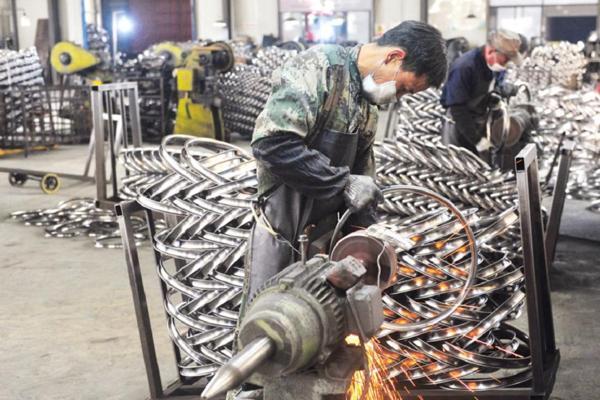China’s economy grows still-weak 4.8 percent
BEIJING


China’s economic growth edged up to a still-weak 4.8 percent over a year earlier in the first three months of 2022 as industrial cities shut down to fight coronavirus outbreaks, threatening to disrupt global trade and manufacturing.
Growth in the world’s second-largest economy crept up from the previous quarter’s 4 percent following a slump triggered by tighter controls on use of debt by China’s vast real estate industry, government data showed yesterday.
Compared with the previous quarter, as other major economies are measured, growth slowed to 1.3 percent from 1.4 percent.
“More pain will come” in the current quarter, Iris Pang of ING said in a report. “Further impacts from lockdowns are imminent.”
The slowdown hurts China’s trading partners by depressing demand for oil, steel, consumer goods, food and other imports.
The flow of industrial goods has been disrupted by the suspension of access to Shanghai, a business center with 25 million people, and other industrial cities. Global automakers and other manufacturers have reduced or stopped production.
The disruption “will weigh on activity in April and into May, if not longer,” Tommy Wu of Oxford Economics said in a report.
That is “likely to have a significant impact on global supply chains.”
First quarter economic growth was below the government’s annual target of 5.5 percent. Forecasters have said that will be hard to meet without large government stimulus spending.
But economists expect officials will eventually publish a growth figure consistent with official targets, as part of doubts that the numbers may be massaged for political reasons.
“The national economic recovery was sustained and the operation of the economy was generally stable,” said a government statement.
Beijing already was promising tax refunds and other aid to businesses to pull the economy out of a slide that began in mid-2021. Last week, Premier Li Keqiang, the number-two leader, called for quicker action to get help to struggling entrepreneurs.
Forecasters say Beijing is moving cautiously and using targeted stimulus measures instead of across-the-board spending.
Chinese leaders worry that might push up politically sensitive housing costs or corporate debt they worry is dangerously high.
Retail sales rose by a modest 3.3 percent over a year earlier in the first quarter after demand was dampened by a government appeal to the public to avoid traveling and large gatherings during February’s Lunar New Year holiday.
Factory output rose 6.5 percent and investment in factories, real estate and other fixed assets increased 9.3 percent, possibly reflecting official orders to banks to lend more readily.
Last week, regulators injected an extra 500 billion yuan ($80 billion) into the pool of money for lending by reducing the amount of deposits commercial banks are required to hold in reserve.
Economists have warned spring planting by Chinese farmers who feed 1.4 billion people also might be disrupted. That would hurt economic activity and boost demand for imported wheat and other food, potentially pushing up already high global prices.
